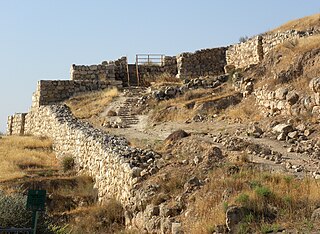Related Research Articles

The Tao Te Ching is a Chinese classic text and foundational work of Taoism traditionally credited to the sage Laozi, though the text's authorship, date of composition and date of compilation are debated. The oldest excavated portion dates to the late 4th century BCE; the Guodian Chu Slips date to the third century BCE, but contain multiple versions, differing from the modern one.

Laozi, also romanized as Lao Tzu and various other ways, was a semi-legendary ancient Chinese philosopher, author of the Tao Te Ching, the foundational text of Taoism along with the Zhuangzi. Laozi is a Chinese honorific, typically translated as "the Old Master". Modern scholarship generally regards his biographical details as invented, and his opus a collaboration. Traditional accounts say he was born as Li Er in the state of Chu in the 6th century BC during China's Spring and Autumn period, served as the royal archivist for the Zhou court at Wangcheng, met and impressed Confucius on one occasion, and composed the Tao Te Ching in a single session before retiring into the western wilderness.

Lachish was an ancient Canaanite and Israelite city in the Shephelah region of Israel, on the south bank of the Lakhish River, mentioned several times in the Hebrew Bible. The current tell (ruin) by that name, known as Tel Lachish or Tell ed-Duweir, has been identified with the biblical Lachish. Today, it is an Israeli national park operated and maintained by the Israel Nature and Parks Authority. It lies near the present-day Moshav of Lakhish.
This article contains information about the literary events and publications of 1993.

The woolly rhinoceros, simply known as woolly rhino, is an extinct species of rhinoceros that inhabited northern Eurasia during the Pleistocene epoch. The woolly rhinoceros was a member of the Pleistocene megafauna. The woolly rhinoceros was covered with long, thick hair that allowed it to survive in the extremely cold, harsh mammoth steppe. It had a massive hump reaching from its shoulder and fed mainly on herbaceous plants that grew in the steppe. Mummified carcasses preserved in permafrost and many bone remains of woolly rhinoceroses have been found. Images of woolly rhinoceroses are found among cave paintings in Europe and Asia. The species range contracted towards Siberia beginning around 17,000 years ago, with the youngest known records being around 14,000 years old in northeast Siberia, coinciding with the Bølling–Allerød warming, which likely disrupted its habitat, with environmental DNA records possibly extending the range of the species around 9,800 years ago.

The zun or yi, used until the Northern Song (960–1126) is a type of Chinese ritual bronze or ceramic wine vessel with a round or square vase-like form, sometimes in the shape of an animal, first appearing in the Shang dynasty. Used in religious ceremonies to hold wine, the zun has a wide lip to facilitate pouring. Vessels have been found in the shape of a dragon, an ox, a goose, and more. One notable zun is the He zun from the Western Zhou.

The archaeology of Israel is the study of the archaeology of the present-day Israel, stretching from prehistory through three millennia of documented history. The ancient Land of Israel was a geographical bridge between the political and cultural centers of Mesopotamia and Egypt.
The year 1999 in archaeology involved some significant events.
The year 1996 in archaeology involved some significant events.

The Guodian Chu Slips were unearthed in 1993 in Tomb no. 1 of the Guodian tombs in Jingmen, Hubei Province and dated to the latter half of the Warring States period. Scott Cook completed a study and translation of all the manuscript of this corpus.

Prehistoric Korea is the era of human existence in the Korean Peninsula for which written records do not exist. It nonetheless constitutes the greatest segment of the Korean past and is the major object of study in the disciplines of archaeology, geology, and palaeontology.

The Boxgrove Palaeolithic site is an internationally important archaeological site north-east of Boxgrove in West Sussex with findings that date to the Lower Palaeolithic. The oldest human remains in Britain have been discovered on the site, fossils of Homo heidelbergensis dating to 500,000 years ago. Boxgrove is also one of the oldest sites in Europe with direct evidence of hunting and butchering by early humans. Only part of the site is protected through designation, one area being a 9.8-hectare (24-acre) geological Site of Special Scientific Interest, as well as a Geological Conservation Review site.
Sarah Allan is an American paleographer and scholar of ancient China. She was a Burlington Northern Foundation Professor of Asian Studies in the Department of Asian and Middle Eastern Languages and Literatures at Dartmouth College; she is currently affiliated to the University of California, Berkeley. She is Chair for the Society for the Study of Early China and Editor of Early China. Previously, she was Senior Lecturer in Chinese at the School of Oriental and African Studies at the University of London. She is best known for her interdisciplinary approach to the mythological and philosophical systems of early Chinese civilization.

The existence of rhinoceroses in ancient China is attested both by archaeological evidence and by references in ancient Chinese literature. Depictions of rhinoceroses in ancient Chinese art are typically very accurate and lifelike, suggesting that they were modelled first-hand by the artist on living rhinoceroses rather than being based on legend or traveller's tales. The main species of rhinoceros that lived in China in ancient times has been identified as the Sumatran Rhinoceros, more especially the Northern Sumatran rhinoceros, although the Indian Rhinoceros and Javan Rhinoceros were also present.
The year 2012 in archaeology involved some significant events.
Boxgrove Man is a name given to three fossils of early humans, found at Boxgrove in Sussex, and dated to about 480,000 years old. One piece of the tibia (shinbone) and two teeth were found. The tibia was of a mature well-built man, perhaps from the common ancestor of modern humans and Neanderthals, and the teeth are thought to be of early Neanderthals. They are the oldest fossils of the genus homo found in Britain.
This page lists major archaeological events of 2015.
Xing Zi Ming Chu, translated as Human Nature Is Brought Forth by Decree or The Inborn-Nature Comes from the Mandate, is a Warring States period text from the Kingdom of Chu, excavated in 1993 from the Guodian tomb, near Jingmen in Hubei, China. It is one of the earliest Chinese texts to discuss human nature, although it was lost until its re-discovery.
This page lists major archaeological events of 2018.
The Yana Rhinoceros Horn Site is an Upper Palaeolithic archaeological site located near the lower Yana river in northeastern Siberia, Russia, north of the Arctic Circle in the far west of Beringia. It was discovered in 2001, after thawing and erosion exposed animal bones and artifacts. The site features a well-preserved cultural layer due to the cold conditions, and includes hundreds of animal bones and ivory pieces and numerous artifacts, which are indicative of sustained settlement and a relatively high level of technological development. With an estimated age of around 32,000 calibrated years before present, the site provides the earliest archaeological evidence for human settlement in this region, or anywhere north of the Arctic Circle, where people survived extreme conditions and hunted a wide range of fauna before the onset of the Last Glacial Maximum. The Yana site is perhaps the earliest unambiguous evidence of mammoth hunting by humans.
References
- ↑ Nasti, Atilio (2001). "HMS Agamemnon" (PDF). Retrieved 2021-02-21.
- ↑ "From Israeli Site, News of House of David". The New York Times . 1993-06-08. Retrieved 2017-05-11.
- ↑ "Laozi". Stanford Encyclopedia of Philosophy . Stanford University. 2018.
- ↑ "The evolution of man". Science & Nature. BBC. Retrieved 2018-01-30.
- ↑ "Aracheology: Boxgrove Man reveals his Stone Age-old secrets" . The Independent . London. 1994-06-22. Archived from the original on 2022-05-01. Retrieved 2018-01-30.